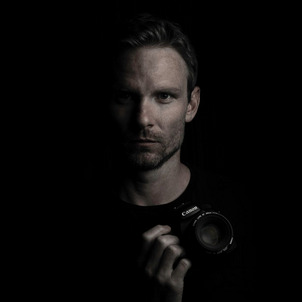Our lectures - Experience. Admire. Be inspired.
Every year, the elite of nature photography gather in Lünen to present breathtaking images, exciting stories and unique perspectives on nature. Our speakers travel from all over the world - exclusively for the festival - to share their impressive experiences and works with you.
Whether spectacular animal observations, thrilling adventures or in-depth insights into the protection of our environment - a varied programme full of emotion, knowledge and inspiration awaits you in the theatre hall of the Heinz-Hilpert-Theater.
You will find the current lecture programme here from July. Until then, look forward to an unforgettable festival full of nature, photography and encounters!
Lecture program
Saturday, 25. October 2025
| 09:30 |
Opening |
| 09:45 |
Jan Piecha & Dominik Janoschka (DE) |
| 10:20 | Aaron Gekoski (GB/PH) Conflict zones: reporting from the frontline of conservation |
| 10:50 | Break |
| 12:10 |
Keith Wilson (AU/GB) |
| 12:30 | Kai Hornung (DE) Finding Small |
| 12:55 | Theo Bosboom (NL) Flowerscapes – A bug’s eye view |
| 13:20 | Lunch break |
| 15:20 |
Agorastos Papatsanis (GR) |
| 15:45 | Klaus Nigge (DE) Fatal beauty – blue macaws |
| 16:30 | Break |
| 18:00 | Audience award |
| 18:10 |
Contributions to nature photography |
| 18:45 |
Morgan Heim (US) |
Sunday, 26. October 2025
| 09:30 | Opening |
| 09:40 | GDT Regional Group - Hesse, Palatinate and Saarland Region in focus: A mosaic of meadows, forests and rivers |
| 10:15 | Florian Ledoux (FR) Arctic Intimacy: A Journey Through Silence, Life and Nature’s Wonder |
| 10:50 | Break |
| 12:00 | Kevin Morgans (UK) Puffins: Life On The Atlantic Edge |
| 12:30 | Ritva Kovalainen & Sanni Seppo (FI) Forests of the North Wind |
| 13:15 | Lunch break |
| 14:45 | Audun Rikardsen (NO) Re-defining the life of Arctic whales |
| 15:15 | Markus Stock (DE) Nature mysticism - image and sound |
| 15:50 | Last but not least – Festival ending |
Speakers
Jan Piecha und Dominik Janoschka (DE)

Raccoon capital of Germany
Raccoons are native to North America and only arrived in Germany in 1934. Over the years, an unusually high number of these masked nocturnal creatures has earned the city of Kassel a reputation as "raccoon capital of Germany". Photographs of raccoons can be found throughout the city, local newspapers report on them regularly, and many people have their own raccoon stories to share. But despite their local notoriety, few Kassel residents have actually seen a raccoon. Where do the masked bandits live and what are their habits? And what does living in Germany's unofficial raccoon capital mean for local residents? Jan Piecha and Dominik Janoschka have spent several years exploring these questions, dedicating countless nights to tracking and photographing raccoons. Their talk gives insights into the duo's nocturnal photographic adventures.
About Jan Piecha and Dominik Janoschka
Jan Piecha (34) is an environmental planner and ecologist. For several years, he worked as a research associate at various universities, contributing to a range of conservation projects. This professional background complements his long-standing work as a freelance nature photographer. Jan is currently employed at NABU’s national headquarters, where he focuses on conservation communication—and, naturally, oversees the image archive.
@janpiechaphoto

@dominikjanoschka
Aaron Gekoski (GB/PH))

Conflict zones: reporting from the frontline of conservation
Across the globe, animals are being hunted, traded, consumed, and exploited - and thereby pushed to the brink of extinction by human actions. For nearly two decades, award-winning photojournalist Aaron Gekoski has been on the frontlines of this crisis, documenting the stark realities of human-animal conflicts in some of the planet’s most unforgiving environments.
In this powerful presentation, Aaron shares stories from the trenches: from Cambodia’s dog-drowning facilities and West Africa’s voodoo markets to wildlife tourism sites and the murky underworld of the exotic pet trade. Blending firsthand accounts with hard-hitting imagery, Aaron challenges audiences to reflect on our often troubled relationship with wildlife - and reveals how powerful visuals can not only win awards, but spark real and lasting change.
Despite the darkness, there is hope. And through awareness, storytelling, and action, we can help turn the tide for animals around the world.
About Aaron Gekoski
Aaron Gekoski, 45, is an environmental photojournalist and film-maker whose work explores our complex relationship with animals. Aaron has spent nearly 20 years investigating issues ranging from the illegal wildlife and pet trade, to marine conservation and wildlife tourism. His goal is to transform difficult themes into visually compelling narratives, revealing hidden layers of light amongst the darkness.
Aaron’s photographs and films have won numerous international awards and he has served as juror for multiple photography competitions. As a film-maker, he aims to make conservation accessible to all through entertaining and educational content. His documentaries have been presented on National Geographic, Al Jazeera, Sky TV, and other leading broadcasters. His latest feature film, Dethroned, is the result of a three-year investigation into the global big cat trade and has been critically acclaimed on the festival circuit.
www.aarongekoski.com

Keith Wilson (AU/GB)

Greenland Before
In the summer of 1988 and winter of 1989, Keith Wilson co-led two photo excursions to the south and southeast of the world’s largest island, documenting the breath-taking landscapes and small, mostly subsistence communities dotted around the ice-covered coast. For nearly 40 years, these photographs have remained locked away and unseen.Now they are to be published in a new book that captures Greenland as it once was, while highlighting what remains at risk due to the climate crisis and rising geopolitical tensions. Shot entirely on film, these photographs show a land where people lived with respect for an environment that has fascinated explorers, scientists and photographers for generations.
“I think we are going to get it. One way or the other, we’re going to get it.” President Donald J. Trump, March 5th, 2025
About Keith Wilson
Keith Wilson is a writer, picture editor and journalist. He is a co-founder of Photographers Against Wildlife Crime, and the author and editor of numerous photo books which have been awarded by Pictures of the Year International, the Independent Publisher Book Awards and Prix de la Photographie Paris (PX3). Recent titles include The Evidence Project, HIDDEN: Animals in the Anthropocene, FOX: Neighbour Villain Icon and three editions of Photographers Against Wildlife Crime.
In 1989, he became the youngest ever editor of the weekly photo magazine, Amateur Photographer, a role which he fulfilled for nearly ten years. He then launched Outdoor Photography, serving as editor from 2000 to 2007, and Black + White Photography magazines.

www.keithwilsonmedia.com
www.photographersagainstwildlifecrime.com
Kai Hornung (DE)

Finding small
In this talk, award-winning photographer Kai Hornung invites you to join him on a creative journey—one that leads from the spectacular, dramatic landscapes that earned him international acclaim, to quiet, intimate images that carry deeper personal meaning. This is a journey of letting go of external expectations and turning instead towards one’s inner photographic voice - to images that feel rather than explain, that evoke rather than reveal. Kai shares how pausing to see consciously can allow us to find the grand in the small. This is a talk about photographs that resonate and move us.
About Kai Hornung
Kai Hornung is an internationally recognised and award-winning landscape photographer and visual artist based in Hanover, Germany. Kai turned to photography about a decade ago and has since developed a distinctive visual language—characterised by minimalism, emotion, and depth. His portfolio ranges from abstract, close-up studies of nature to sweeping, spectacular landscapes. His images have been featured in publications such as National Geographic Magzine, Condé Nast Traveller, and Elements. Kai received the 2020 International Landscape Photographer of the Year Award and was shortlisted for the Sony World Photography Awards in the same year. Today, Kai shares his philosophy and experience through workshops, talks, articles, and mentoring. He is a sought-after mentor, speaker and juror.

www.kaihornung.com
Theo Bosboom (NL)

Flowerscapes – A bug’s eye view
What does an ant see when it looks up while walking through a field of flowers? Or a ladybug that has just landed on a flower stalk? How wonderful it would be to photograph wildflowers from such a bug's eye view! Until recently, this remained only a dream, but photographer Theo Bosboom found a way to do it with a special long, narrow wide-angle macro lens. The results of his Flowerscapes project are both surprising and very beautiful and offer a unique new view on the world of flowers! In this inspiring talk Theo will explain his vision on flower photography and will demonstrate how he took the images from the bug’s eye perspective. He will also discuss the sharp decline in wild flowers and insects in Western Europe and the hopeful recent developments in his home country, the Netherlands. Be warned: after this presentation, you may never look at flowers the same way again!About Theo Bosboom
Theo Bosboom has been a professional nature and landscape photographer since 2013. He is widely regarded as a creative photographer with a strong eye for detail and composition, and he is always seeking new perspectives to show nature in a different way.
His photographs are regularly published in renowned magazines such as National Geographic, BBC Wildlife and OnLandscape. Theo has won numerous awards in international photography competitions like Wildlife Photographer of the Year and European Wildlife Photographer of the Year and is a frequent speaker at international photography festivals. Theo has published five photo books, including Flowerscapes, A bug’s eye view (2025).

Agorastos Papatsanis (GR)

Mushroom magic
Why mushrooms? To me, mushrooms symbolise imagination. They are "visual stimuli". And the perfect photographic motif: a fairy tale, an idea, a mystery. Defined by shapes, colours, and myths. They are children of the rain and ornaments of the forest. By their very nature, mushrooms and fairy tales are inseparable —they inspire our fantasies. Mushroom's unusual shapes, magical chemistry, and the wealth of stories that vacillate between myth and reality stir the imagination of all who wander in the woods. In this talk, I aim to present mushrooms in their natural environment, yet through a somewhat different lens—with touch of enchantment that emphasises their fairy-tale essence.About Agorastos Papatsanis
Agorastos is a nature photographer specialised in mushrooms. He was born in 1977 in Deskati, a small village surrounded by forest in the Grevena region of northern Greece. Agorastos now lives in Litochoro, Pieria, in the foothills of Mount Olympus, where he works as a professional photographer. His first contact with nature photography took place in 1999. Until 2008, he focused on mapping and identifying fungi, after which his approach became increasingly artistic. Since then, Agorastos has won numerous accolades in some of the world’s most prestigious photography competitions, including Natural History Museum and BBC Wildlife Photographer of the Year in 2013 and 2016, and GDT winner in the category Plants and Fungi in 2022 and 2023.

www.agorastosphotography.gr
Klaus Nigge (DE)

Fatal beauty – blue macaws
There are – or rather, once were – four species in the South American genus Anodorhynchus. Each species of macaw is uniquely beautiful, and thus highly coveted by exotic bird collectors.
This presentation features not only the well-known hyacinth macaw, but also tells the sensational stories of the rarest of all macaws – the Spix’s macaw – and how the Lear's macaw was saved at the very last moment. Sadly, all that remains of the glaucous macaw are a few faded specimens in the dusty archives of natural history museums.
The talk explores wildlife trafficking, habitat destruction, and biodiversity loss – but also the extraordinary commitment of individuals working tirelessly to save these magnificent birds.
And above all, the presentation is a tribute to the breathtaking beauty of macaws in their natural habitat.
About Klaus Nigge
Klaus Nigge is a wildlife photojournalist. After studying biology, philosophy and art, he worked as a biologist before becoming a full-time freelance photographer in 1995. He is a regular contributor to GEO and National Geographic Magazine. From 1993 to 1996, he served as president of the GDT (German Society for Nature Photography) and, together with the Society's board, founded the first International Nature Photography Festival in Lünen – his hometown.

Morgan Heim (US)

New Worlds
In remote Alaska, nature reclaims the ruins of war, and unlocks a photographer's hidden potential
We all search for breakthrough moments as we try to push past plateaus and find our eyes. I found mine in remote Alaska, at an abandoned military base now home to thousands of seabirds and the scientists who study them. In a landscape described as a post-apocalyptic video game without the zombies, scientists are discovering that seabirds could hold the keys to understanding how climate change is affecting marine ecosystems. This talk shares how I came to be among them, the gifts the island offered, and what happens when you finally get out of your own way.
About Morgan Heim
Conservation photographer and filmmaker Morgan Heim explores personal stories behind protecting wildlife and their ecosystems. She is a National Geographic Explorer, Senior Fellow of the International League of Conservation Photographers, and founder of Neon Raven Story Labs — a production house dedicated to stories of nature and our relationships with it. A multi-recipient in Wildlife Photographer of the Year, Big Picture and Siena International Photography Awards, you can find her work in Audubon, Smithsonian, National Geographic and The New York Times.
www.Morganheim.com
www.neonravenlab.com

GDT Regional Group 6 – Hesse, Palatinate and Saarland

Region in focus: A mosaic of meadows, forests and rivers
GDT Regional Group 6 – Hesse, Palatinate and Saarland presents an often overlooked region with tremendous landscape complexity. Semi-natural habitats of remarkable and unexpected diversity unfold between Frankfurt and Luxembourg: urban green spaces in Hesse, vibrant vineyards in Rheinhessen and the Palatinate, mist-shrouded woodlands in the Hunsrück and Eifel, as well as hidden treasures in Saarland. The selected photographs feature serene observations as well as artistic experimentation. A symphony of colour, form and light reveals the character and beauty of these landscapes.rg6.gdtfoto.de
Regional Group 6 of the GDT brings together nature photography enthusiasts from Hesse, Palatinate and Saarland. Regular meetings, joint photo excursions and photographic projects focus on the exchange of ideas about technology, design and a love of nature. The excursions take participants to special landscapes and habitats – from the Wagbach lowlands to the Vosges mountains – and offer a wide variety of subjects, from orchids and insects to alpine wildlife. In addition, the group is involved in creative joint projects such as multi-vision shows that focus on the beauty of regional nature. A special highlight in the annual calendar is the joint biotope maintenance on the Hessische Bergstraße. For almost a decade, members have been working together with NABU to preserve valuable nutrient-poor grasslands – with scythes, rakes and a lot of team spirit. Regional Group 6 combines nature photography with active nature conservation and offers an open community for beginners and advanced photographers alike.

Florian Ledoux (FR)

Arctic intimacy: A journey through silence, life and nature’s wonder
In recent years, Florian Ledoux has spent several months each winter and spring documenting the lives of polar bears on Arctic sea ice. With tireless dedication, Florian and his team braved extreme conditions in order to capture previously undocumented moments in the lives of these extraordinary animals. These denizens of the Arctic became far more than photographic subjects as Florian was able to develop a profound connection to several individuals. His camera serves as an extension of the bears’ hearts and souls, revealing the true essence of the Arctic wilderness. Thus, Arctic is more than a lecture; it is an invitation to an emotional journey into the Far North.
www.florian-ledoux.com
Instagram: Florian_Ledoux_Photographer
About Florian Ledoux
Florian is renowned for strikingly aesthetic compositions. His distinctive imagery is rooted in a deep passion for the Arctic. “Nature has always been my greatest source of inspiration. I endeavor to place nature at the centre of our lives and give a voice to those who cannot speak for themselves.” His work celebrates the beauty of polar landscapes and wildlife, while, at the same time, underscoring the importance of this ecosystem for the future of our planet. Florian creates immersive, visually arresting visuals that draw viewers directly into his vision. He frequently employs aerial photography to offer new perspectives on the behaviour and habitats of Arctic species. In addition to his independent projects, Florian also works as a cinematographer on productions such as Disneynature's Polar Bear and BBC’s Frozen Planet II.

Kevin Morgans (UK)

Puffins: Life On The Atlantic Edge
Join award-winning wildlife photographer and author of Puffins: Life on the Atlantic Edge, Kevin Morgans. For a talk showcasing his career working with the Atlantic puffin, sharing his passion for these charismatic seabirds. This journey has now become more than a photographic project—protecting seabirds and their habitats is now my main drive for photography. During the talk we will cover the many trials and tribulations he has faced along the way, from humble beginnings to full-time wildlife photographer. The talk will be a visual splendour, celebrating the lives of puffins from start to finish.
About Kevin Morgans
I'm a leading professional in the wildlife photography industry, specialising in seabirds. Over the past decade, my focus has been documenting the story of the Atlantic puffin, leading to titles such as The Puffin Man and The Prince of Puffins. This has now become more than a photographic project—protecting seabirds and their habitats is now my main drive for photography.
With over a decade of experience in the industry, I have a wealth of knowledge to share with the community and a collection of awarded images from the world's biggest photographic competitions—including Bird Photographer of the Year. More recently I am proud to present my highly acclaimed book Puffins: Life on the Atlantic Edge. I owe seabirds, particularly puffins, everything to my photographic career. They are a species I have now become synonymous with, having spent years sitting on windswept clifftops documenting their lives and relationship with the coast.
www.kevinmorgans.com

Ritva Kovalainen & Sanni Seppo (FI)

Forests of the North Wind
In their presentation Forests of the North Wind, Finnish artists Ritva Kovalainen and Sanni Seppo explore the dialogue between humans and the forested landscapes of the North. The photographers begin by emphasising the ecological importance of old-growth forests and the devastating consequences of modern industrial forestry. This is followed by a series of impressive, almost meditative panoramic images that capture the unique beauty of these primeval landscapes. The forest appears to move seamlessly from one season to the next, with its spiritual strength touching our human souls. Ritva and Sanni offer a unique perspective on the enduring bond between humans and forests, subtly reawakening elements of ancient myths.
www.ritvakovalainen.com
www.sanniseppo.com
Audun Rikardsen (NO)

Re-defining the life of Arctic whales – revealed by new electronic technology and photography
Over the past ten years, Arctic whales, especially humpback and killer whales, have been sighted more frequently and in greater numbers along the coast of northern Norway, particularly during the dark winter months. In conjunction with new developments in electronic tracking technology and photography, this has opened up undreamt-of possibilities for scientists and photographers. Audun combines the unique combination of whale researcher and nature photographer, which helps him gain completely new insights into the lives of these giants of the seas. In his lecture, he presents surprising and previously unseen facets of the lives of whales in areas and periods where whales cannot be observed using conventional methods. This includes visual impressions from the perspective of the whales themselves and documentation of the dangers they often face when interacting with humans.About Audun Rikardsen
Audun Rikardsen uniquely combines the roles of nature photographer and professor of Arctic and marine biology at UiT (The Arctic University of Norway in Tromsø). He regularly combines photography and science, preferably through the development of new technologies and the use of unusual perspectives. He is an expert in the migration behaviour and tracking techniques of aquatic animals and has focused primarily on whale research over the past ten years. During the same period, he was one of the most internationally acclaimed nature photographers and overall winner of 13 international competitions, including European Wildlife Photographer of the Year and the Fritz Pölking Award, as well as multiple winner of Wildlife Photographer of the Year. He is also one of Norway's most prominent biology scientists and was named Norway's best scientific outreach person of the year.
www.audunrikardsen.com
Facebook: Audun Rikardsen Photography

Markus Stock (DE)

Nature mysticism in images and sound
Landscape as a mirror of the human soul – true to the spirit of the Romantic painters, German musician and photographer Markus Stock is drawn to the woods and moorlands of his home region, the Rhön. Here, he finds a mystical, primeval setting that inspires both his photography and his music.“When I write music, I see images in my mind – which later manifest themselves in my photographs.” The interplay of image and sound is the central theme of Stock’s talk. His photographic work is shaped by the Rhön’s age-old beech forests that seem to belong to a long-past era with their gnarled trees and abundant deadwood – like an untouched, forgotten wilderness. On a virtual journey through misty forests and moorlands, Stock shares his evocative images in harmony with his music performed, in part live on synthesiser.
About Markus Stock
Markus Stock (46) is a German musician, multi-instrumentalist, producer and photographer. Since 1994, Markus’ internationally acclaimed band Empyrium has been exploring the mystical beauty of nature, often with fairytale-like, otherworldly flair. Subsequent band projects such as The Vision Bleak and Sun Of The Sleepless have also achieved international success.
In photography, Markus follows a similar path – creating images rooted in Romantic aesthetics and themes. His forest landscapes and tree portraits possess an air of melancholy and transience in a world that appears largely untouched by humans. A vision of nature that serves as a mirror of the human soul. Markus’ deep bond with the landscape begins at his doorstep, in the legendary woods and moorlands of the Rhön.
Instagram: @markusstock_photography





